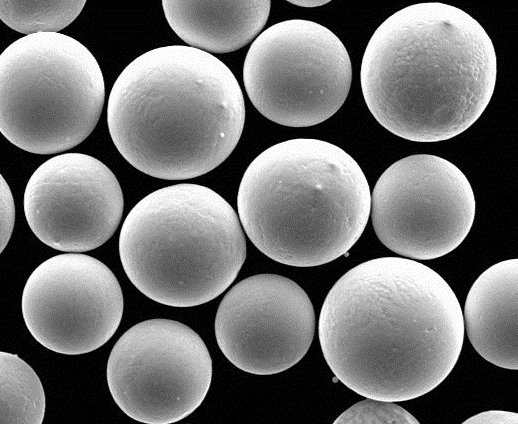The powder preparation method in which a fast-moving fluid (atomizing medium) impacts or otherwise breaks the metal or alloy liquid into fine droplets and then condenses into a solid powder is called the atomization powdering method.
Among the existing pulverizing technologies in my country, the most widely used are water atomization and gas atomization. Although the powdering principle is the same, the physical properties of the powders are still very different. Let's understand the difference between the two.

1. Shape
Since the heat capacity of gas is smaller than that of water, when gas atomization is used, the alloy receives a low degree of chill. When the atomization medium is impacted, the alloy liquid atomized into fine droplets will not solidify immediately, which gives the alloy The time for the droplet to shrink into a ball during the falling process, so it is easy to obtain spherical alloy powder. When water is atomized, the situation is just the opposite. Due to the chilling effect of water atomization into fine alloy droplets, it solidifies into alloy powder almost in an instant. This makes the alloy powder formed by alloys with lower surface tension appear as potatoes. Only those alloys with high surface tension, such as nickel-based alloys, can be made into spherical alloy powders. By adjusting the atomization parameters and the superheat of the alloy liquid during atomization, water atomization can also be used to produce approximately spherical alloy powders to meet the needs of thermal spraying.
1. Chemical composition
No matter whether it is water atomization or gas atomization, the chemical composition of the alloy powder produced will not be different due to the different production methods.
2. Metallographic organization
The alloy powder made by gas atomization has a much lower degree of supercooling than that made by water atomization. Therefore, the metallographic structure of the alloy powder made by different atomization methods with the same chemical composition will be different.
3. Oxygen content of alloy powder
The oxygen content of the alloy powder is related to the sensitivity of the alloy itself to oxygen and the oxygen content in the atomization environment during atomization. If the alloy itself is very sensitive to oxygen, not only should measures be taken during atomization, but also vacuum melting should be used during melting. For most alloys, as long as the contact with oxygen is reduced during atomization, the goal of reducing the oxygen content in the alloy powder can be achieved. During gas atomization, nitrogen is usually used as the atomization medium. A large amount of nitrogen fills the atomization area, expelling oxygen in the atomization area, so it can protect the alloy droplets from being oxidized during atomization and cooling. To
When a molten alloy liquid is atomized into metal powder, its surface area increases countless times at the moment of atomization. In other words, its area combined with oxygen also increases, and more metal surfaces are exposed. In the fogging environment. Therefore, if no measures are taken during water atomization, the oxidation of alloy droplets cannot be avoided. In order to make the atomization environment less or anaerobic during water atomization, first, the atomization cylinder must be sealed to isolate the atomization environment from the surrounding environment. Second, it is necessary to remove the oxygen in the closed atomization cylinder. Finally, such an oxygen-free or low-oxygen atomization environment is maintained during the atomization process, until the atomization is over, all the alloy droplets solidify into alloy powder.
4. Production and investment costs
The investment in equipment for water atomization and aerosolization is the same. The investment for aerosolized cylinder is relatively large, but the atomization medium working group-gas cylinder group and meter, valve investment is small; water atomization is On the contrary, the input of the atomization cylinder is smaller than that of the gasification, but the input of the high-pressure water pump and the centrifugal water pump is greater than that of the gas atomization atomization medium working group. In other parts, the investment of the two is similar, and when combined, it is almost the same. To
6. Production cost per unit alloy powder
The production cost per kilogram of alloy powder is higher for gas atomization than for water atomization. According to actual calculations, the cost of atomizing medium is required for mixing one kilogram of alloy powder by gas atomization. When water is atomized, the main energy consumed by the atomizing medium is the electric energy when the water pump is running. For this reason, gas atomized alloy powders on the market are generally more expensive than water atomized ones.

